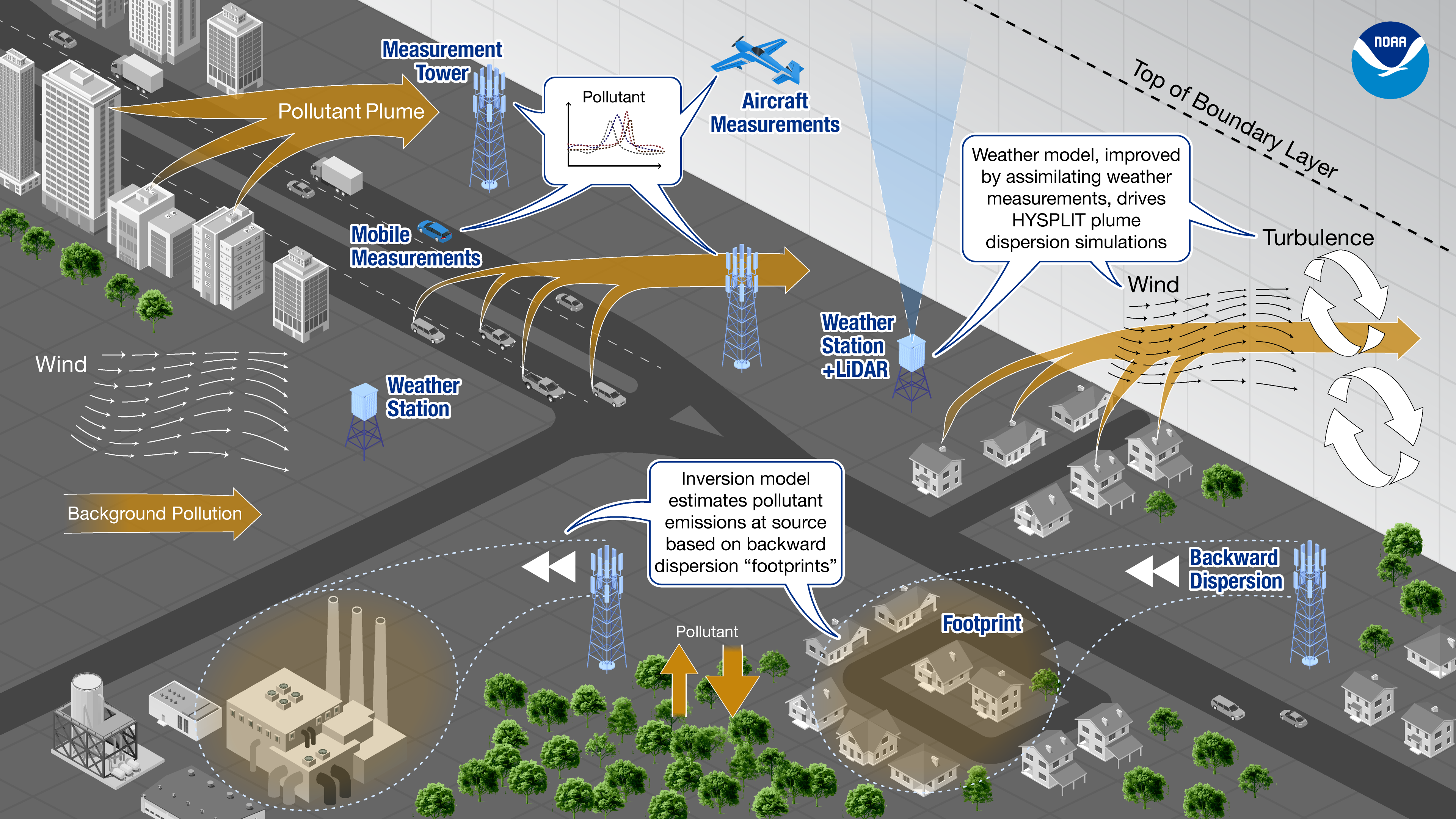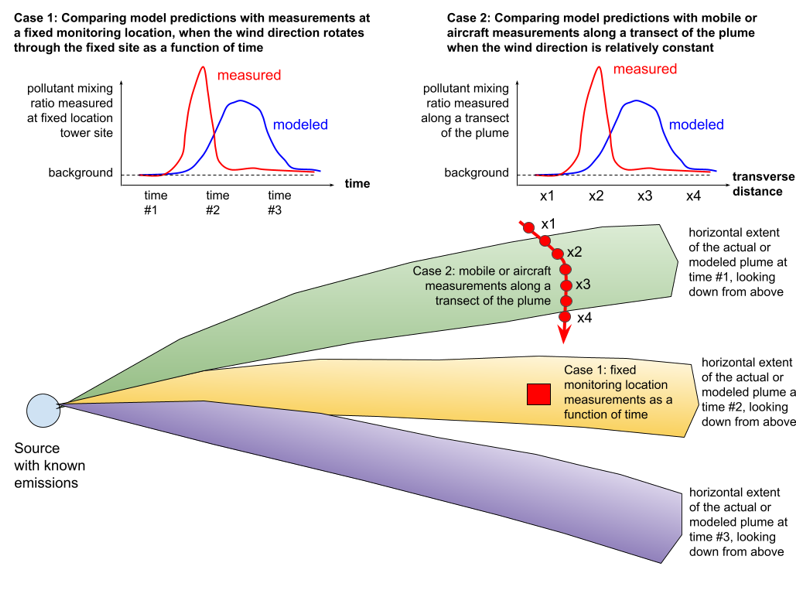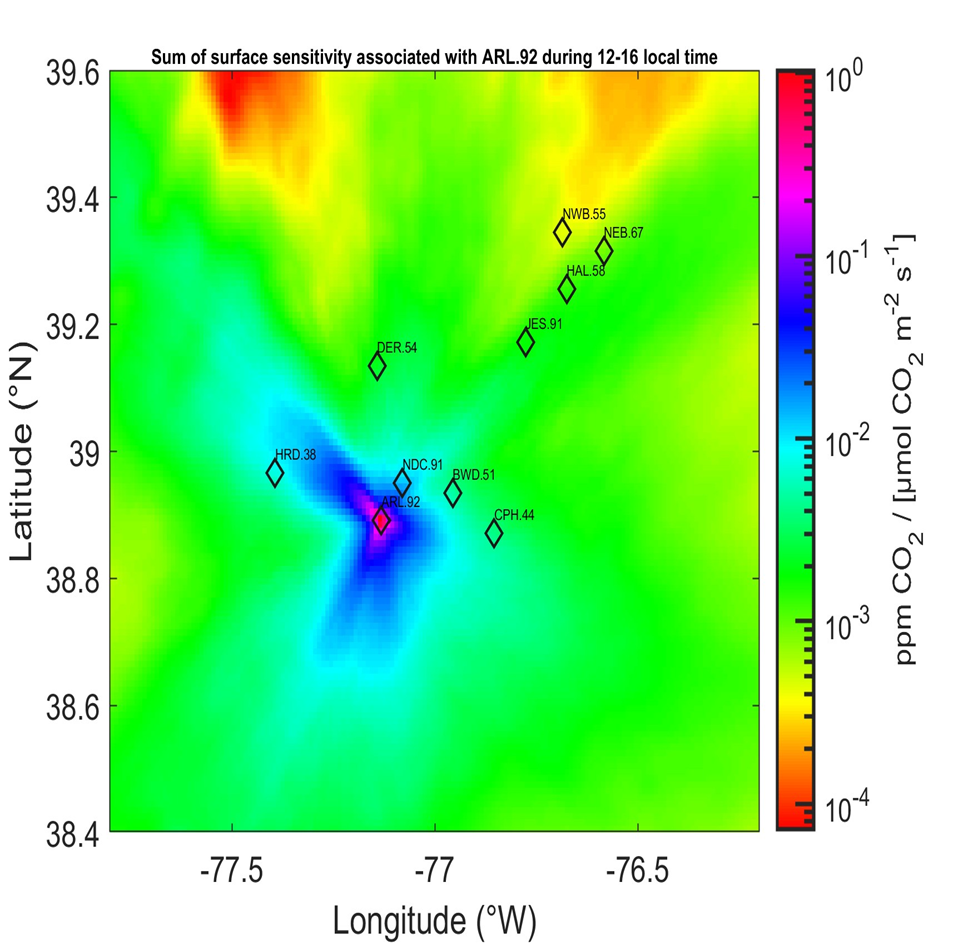Left to Right: A fire destroyed an abandoned factory in Jackson, MI, on Aug 22, 2023. Credit: https://www.fox47news.com/large-fire-north-of-downtown-jackson; An example of HYSPLIT simulation results for the Jackson MI event, showing downwind concentrations of PM2.5 arising from the fire at the abandoned factory. Credit: NOAA ARL
Conceptual diagram of the Tracers of Opportunity approach to evaluate and Improve the HYSPLIT Atmospheric Transport and Dispersion Model.
Credit: Mark Cohen (NOAA)
In Case 1, the wind direction changes over time, and the plume “passes” through the location of a fixed monitoring site. The model-predicted concentrations at that location as a function of time can be compared against the actual measurements as a function of time. The rate of wind direction change must be factored into this analysis, to relate time to distance in the model evaluation process. In the example shown, the modeled plume passes through the site at a later time – suggesting that the wind direction supplied to the model is not accurate. However, it is also seen that the width of the modeled and measured plume are significantly different, suggesting that the modeled transverse dispersion is being overestimated in this case.
In Case 2, the wind is relatively constant, and mobile or aircraft measurements are made along a transect of the plume. The model predictions along this transect can be compared to the measurements along the transect. In the example shown, the wind direction supplied to the HYSPLIT model is incorrect, so the plume is in a different place. But also, the modeled plume is significantly wider than the measured plume, suggesting that the modeled transverse dispersion is being overestimated in this case.
In both cases, simulation errors can be divided between meteorological transport errors – e.g., the wind speed/direction being supplied to the model – and errors in the HYSPLIT’s dispersion simulation around the mean wind field.
HYSPLIT estimates vertical and horizontal dispersion using wind, temperature, friction velocity, stability, turbulence parameters and planetary boundary layer height from meteorological inputs. We will assess new and existing schemes to simulate turbulence and mixing in HYSPLIT and in the urban meteorological modeling carried out to drive the HYSPLIT model using the tracer of opportunity approach.






